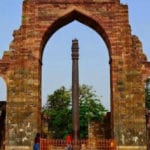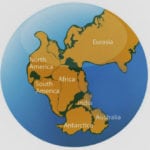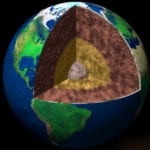 Misconceptions
Misconceptions  Misconceptions
Misconceptions  History
History 10 Amazing Roman Epitaphs
 Weird Stuff
Weird Stuff 10 Niche Subcultures That Are More Popular Than You Might Think
 Mysteries
Mysteries 10 Tragic Disappearances and Deaths in Joshua Tree National Park
 History
History 10 Ways Childhood Really Sucked in the Old West
 Music
Music 10 Name Origins of Famous Bands from the 1990s
 Religion
Religion 10 Biggest Turnarounds by the Catholic Church
 Weird Stuff
Weird Stuff 10 Unbelievable Times Laws Had Unintended Consequences
 Humans
Humans Ten Historic Women Who Deserve Way More Credit Than They Got
 Movies and TV
Movies and TV 10 Films That Spawned Major Lawsuits
 Misconceptions
Misconceptions 10 Phony Myths and Urban Legends That Just Won’t Die
 History
History 10 Amazing Roman Epitaphs
 Weird Stuff
Weird Stuff 10 Niche Subcultures That Are More Popular Than You Might Think
Who's Behind Listverse?

Jamie Frater
Head Editor
Jamie founded Listverse due to an insatiable desire to share fascinating, obscure, and bizarre facts. He has been a guest speaker on numerous national radio and television stations and is a five time published author.
More About Us Mysteries
Mysteries 10 Tragic Disappearances and Deaths in Joshua Tree National Park
 History
History 10 Ways Childhood Really Sucked in the Old West
 Music
Music 10 Name Origins of Famous Bands from the 1990s
 Religion
Religion 10 Biggest Turnarounds by the Catholic Church
 Weird Stuff
Weird Stuff 10 Unbelievable Times Laws Had Unintended Consequences
 Humans
Humans Ten Historic Women Who Deserve Way More Credit Than They Got
 Movies and TV
Movies and TV 10 Films That Spawned Major Lawsuits
10 Discoveries Of Lost Cultures That May Rewrite Our History
It’s been said that history is written by the victors. But sometimes, history is rewritten (or at least given a few edits) by archaeologists, historians, and other researchers who unearth the secrets of lost cultures long after the victors have perished. Still, for all we’ve learned, many mysteries remain.
10Underground Ani
Turkey

Although it was once the capital of the Kingdom of Armenia, the 5,000-year-old city of Ani now lies within the borders of Turkey. Once called the “City of 1,001 Churches” or the “City of Forty Gates,” the formerly powerful, prosperous, and regionally dominant Ani has been abandoned for over 300 years.
Its history had been a violent one, with the city-state having been conquered hundreds of times. At various points, Ani was ruled by the Armenians, the Byzantines, the Georgians, the Kurds, the Ottoman Turks, and the Russians.
Just after World War I, Turkish officials ordered the obliteration of Ani’s monuments, which were within Turkey’s borders by then. Although the official destruction wasn’t complete, looters and vandals added to the ruin of the neglected city.
It appeared to be a sad coda to the history of the city and its culture until researchers uncovered the secrets of “underground Ani” and announced them at the 2014 Kars Symposium at Kafkas University in Turkey. In his presentation, history researcher Sezai Yazici told of how George Ivanovic Gurdjieff and his friend Pogosyan were digging at a tunnel beneath the ruins of Ani in the 1880s when they realized the soil had changed. As they continued digging, they stumbled upon a famous Mesopotamian school that was used in the sixth and seventh centuries. They also found letters between monks that were written in an ancient Armenian language.
As confirmed by Italian excavators in 1915, underground Ani had a school, a monastery, rock houses, monk cells, water channels, meditation rooms, and more than 500 meters (1,600 ft) of complex tunnels. At least 823 structures and caves have been identified in underground Ani. Yazici wants this underground complex to be promoted to the outside world by Turkey’s Culture and Tourism Ministry.
9Silla
Korea

Initially, Silla was one of three kingdoms in Korea. The other two were Goguryeo and Baekje. Silla came into existence in 57 BC as a small tribal state, but it grew over time to encompass over half of the Korean peninsula, mainly in the South.
As Silla developed into a centralized power, the royal Kim family consolidated its right to rule by designing a system of social status called kolpum, or “bone rank.” Similar to being born with royal blood, all rulers initially had to be of “hallowed bone” rank. This caste system also controlled your career options, the size of your house and carriage, and the color of your clothes.
Silla combined forces with China to conquer Baekje in 660 and Goguryeo in 668. With only a small part of northern Korea outside of its rule, the three kingdoms became known as the “Unified Silla” kingdom. Much of Unified Silla remains a mystery, including the Hwarang, an elite group of young men whose military and religious role is the subject of continued debate.
Unified Silla introduced Buddhism as the dominant force in Korea’s culture, including its art, traditions, and government. The capital city of the kingdom was Gyeongju, which is still home to some of the country’s most impressive Buddhist art and royal tombs. Before the rise of Buddhism, valuable jewelry, weapons, and pottery were usually placed in tombs to help the departed in their next life. Gold jewelry and glass bead necklaces were particularly popular. After Buddhism became dominant, valuable art was put on public display, instead of in tombs, because Buddhists believe art is for the living.
During this time, the government also restored many temples, including the famous Pulguksa Temple, which was heavily influenced by Tang Chinese architecture. The temple’s bridges (or staircases) helped visitors journey from the earthly world to a Buddhist paradise. Among other advancements, the Koreans also developed movable type about two centuries before Gutenberg.
In 935, Unified Silla was conquered by the Goryeo Dynasty. At 992 years, Silla was the longest-lasting kingdom in Korea’s history. Although Silla’s cultural importance to Korea may be clear to some of its residents, it has been almost completely unknown outside of Korean borders, especially in the West.
8The Cucuteni-Trypillian Culture
Eastern Europe

In 1893, the ruins of the village Trypillia were discovered in central Ukraine, sparking an archaeological exploration that revealed a fascinating culture extending 35,000 square kilometers (14,000 mi2) into what is known today as Ukraine, Romania, and Moldova. The Cucuteni-Trypillian culture existed from 5400 BC to 2700 BC, with some of its cities hosting as many as 15,000 residents and thousands of buildings. Many of its settlements were only 3–4 kilometers (2–2.5 mi) apart.
The Cucuteni-Trypillian people had a matriarchal society, with worship of a Great Goddess and belief in an afterlife. Excavators have found decorated altars, pottery, and figurines, with many statuettes made of metal. From pictures on the artifacts, archaeologists learned that women farmed with ploughs, created pottery, and made clothing. Men hunted, bred animals, and made tools.
The Cucuteni-Trypillian people planned their cities using clay models of the buildings. With copper and stone axes, they chopped down thousands of trees to construct the single and multistoried buildings in their settlements. Walls and floors were coated with clay, painted white and red, and decorated to keep residents safe from evil spirits. The Cucuteni-Trypillian people also built temples and other public buildings.
But for all the care with which they constructed a settlement, they engaged in a strange ritual of burning down the entire village every 60–80 years, sometimes reconstructing the same buildings over the ruins. In Romania, archaeologists have found 13 layers of settlements in the same location. However, in some cases, they moved to another area to rebuild. Scientists have different theories as to why the Cucuteni-Trypillian people did this, but the actual reason remains a mystery.
7The Sican Culture
Peru
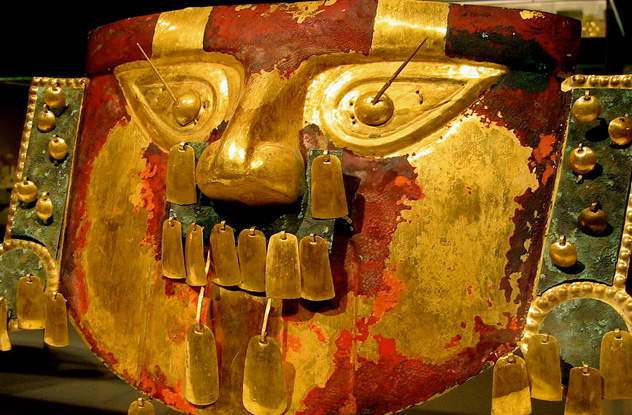
Between roughly AD 750 and 1375, the Sican culture thrived in the Lambayeque Valley of Peru. The Sican people are believed to be descendants of the Moche, but no one really knows exactly how the culture began. Legend tells us that the mythical leader Naymlap sailed into the waters near Lambayeque Valley with his people and built palaces and temples on the land there. More likely, the Sican broke off from the Wari civilization in the eighth century to establish their own culture.
The Sican used irrigation technology like the Moche, but the Sican culture had different burial practices. Rather than bury their dead lying down, they buried people sitting up. Their rulers were interred with valuable goods made from gold and silver. There is some evidence of ritual mass human sacrifice to celebrate death, even though the Sican weren’t a warlike people.
They were ostentatious, however. The upper class liked to wear tunics, gloves, and jewelry made with gold. They also wore showy feathered headdresses. The Sican produced polished black pottery along with beautiful gold metalwork inlaid with turquoise. They produced some of the most celebrated pieces of art from the Andes.
According to legend, Naymlap’s 12 grandsons ruled the land until one did the bidding of a witch and moved a female stone idol he shouldn’t have. This caused rains and floods that brought massive destruction to the culture around AD 1100. From a scientific standpoint, analysis of glacial ice cores shows that an El Nino weather event probably occurred in that area at that time.
After the El Nino event, it appears that the Sican abandoned their copper monetary system, most of their political and religious structures, and their most important city, Batan Grande, which suffered significant damage in the flooding. However, the buildings may have been deliberately burned. The archaeological evidence is unclear as to exactly what happened. The Sican people established a new capital at Tucume before being conquered by Chimu warriors in the 14th century.
6The Qijia Culture
China
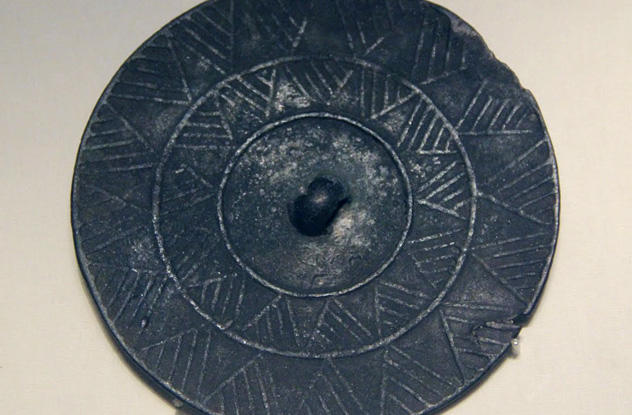
Dead men tell mysterious tales, at least where the Qijia culture is concerned. In the 1920s, a Swedish geologist uncovered the first evidence of the Qijia people in Gansu in northwestern China. Around the mid-20th and early 21st centuries, more sites were found, suggesting that the Qijia culture existed from about 2250 BC to 1900 BC.
Qijia sites were dotted along the upper Yellow River and various rivers that flowed into it. Despite the rivers, the climate was dry, leading the Qijia people to grow suitable crops and to raise animals like goats, pigs, and sheep. They lived in small settlements with houses that were partly subterranean.
Within Qijia tombs, archaeologists found evidence of human sacrifices, although no one knows whom they sacrificed or why. Families were often buried in a single tomb, along with pottery, jewelry, and weapons. Scientists also discovered “bone divination lots,” which are artifacts used to predict the future.
In 1999, Chinese archaeologists stumbled upon a Qijia mystery that astounded them. They were excavating a half-underground house in a 400-dwelling village when they discovered 14 sets of human bones in three groups of three to five people each. The archaeologists had never seen so many ancient people in one Chinese house.
With each group composed of one adult protecting two to four children, it looked like everyone had died suddenly in a catastrophic event. “Something enormously extraordinary must have happened to these ancients,” said archaeologist Zhao Zhinjun to the China Internet Information Center, a Chinese government portal site. “The young and strong have run for [their] life, leaving behind children and the elderly who then appeared to have hid in places they thought were safe to shelter in.”
Over time, scientists believed they solved the mystery. It appeared that a major earthquake had hit the village, possibly followed by flooding. Although there was catastrophic damage, one interesting artifact was preserved. Archaeologists discovered a pottery bowl upside down on the floor. When they turned it over, they found the earliest noodle known to exist in China.
5The Srubna Culture
Eastern Europe
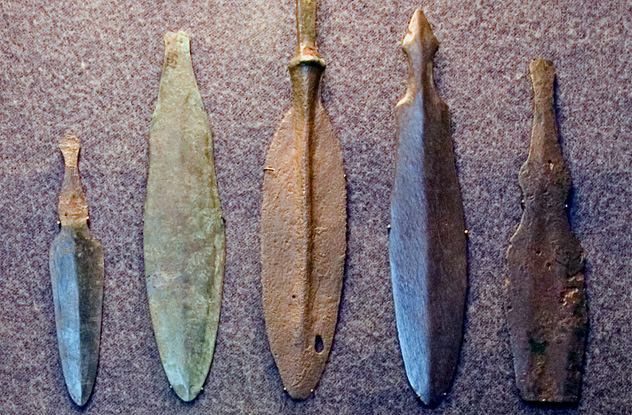
The Srubna (aka “Srubnaya”) culture existed from approximately 1950 BC to 1200 BC in the area from the Ural Mountains to central Ukraine. In Russian, srub means “timber framework,” which explains why this culture is best known for its burial chambers, resembling log cabins made of timber, that are located under burial mounds called “kurgans.”
The burial chambers, which were considered to be houses of the dead, looked a lot like rooms that the Srubna people lived in aboveground. Even so, over 95 percent of the Srubna dead were buried in regular earthen graves. So the name of the culture is a bit misleading. Researchers have found thousands of small Srubna settlements throughout Eastern Europe, most with only a few houses each, but the settlements do have differences. So it’s more of a family of cultures. Nevertheless, archaeologists know so little about these people that they really haven’t been able to divide them into clear groups.
Besides grave sites, scientists have mostly found pottery shards and tools made of stone or bronze. Many of the sites appear to be poor in a material sense. There’s some evidence of agriculture but more of animal breeding, mainly cows, horses, pigs, and sheep. Again, it differs by region, and scientists debate how to interpret their findings.
In 2011, archaeologists discovered what appeared to be a stone sundial in one of the Srubna burial mounds. A researcher at Southern Federal University in Russia confirmed that the markings would have shown time accurately. In fact, it was surprisingly sophisticated from a geometry perspective.
4Dorset Culture
Arctic Canada And Greenland

Named by archaeologists after the location of an excavation site, the primitive Dorset people inhabited Arctic Canada and Greenland from about 800 BC to AD 1300. No one’s sure where they originated or why they ultimately disappeared, but we do know that they were a largely isolated people.
They settled on the coasts, fishing and hunting nearby animals for food. Archaeologists have combined scientific analysis with stories told by the Inuit of the “Tunit” (their name for the Dorset people), whom the Inuit met about 1,000 years ago when they crossed from Alaska into Arctic Canada.
According to the Inuit, the Dorset people were extremely strong but gentle giants who were skilled hunters. They could snap the neck of a walrus with a harpoon line then drag the animal home.
Their tools were a mystery. They were so small and precise that they seemed unfit for harpooning or cutting up animals, scraping skins, or performing daily household chores. Yet the Dorset were able to manipulate tools skillfully, often at the end of a handle. The Dorset were frequent traders, which archaeologists could trace from unusual materials like meteorite iron that was specific to that region. However, there’s little evidence that the Dorset people made technological advances. It appears that they didn’t use dogsleds or kayaks in their daily lives.
Although the Dorset people were timid around outsiders, the Inuit claim that the Dorset men were madly in love with their wives. Perhaps that’s because so few women appeared to live among them. According to DNA analysis, there was little diversity in maternally inherited DNA in the studied samples, which means few women migrated with the men to Arctic Canada and Greenland. The Dorset people didn’t appear to intermarry or have sex with visitors from other cultures. Archaeologists can’t explain why the Dorset people so completely isolated themselves but think it may have to do with their spiritual beliefs.
3Magan Culture
Oman
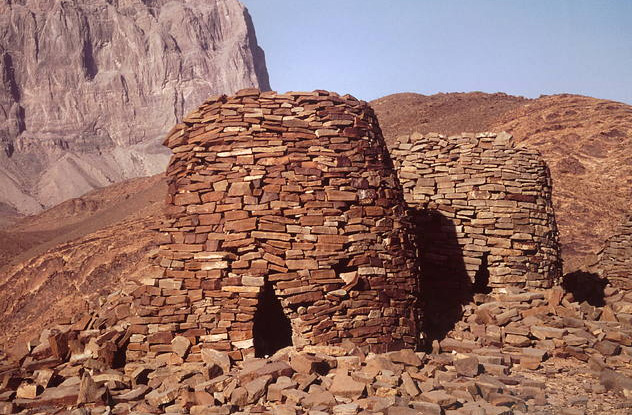
About 5,000 years ago in the third millennium BC, an ancient culture known as the Magan civilization is believed to have inhabited what is now northeastern Oman. Archaeologists are excavating the sites of Bat, Al-Khutm, and Al-Ayn, believing they were ancient trading centers with Mesopotamia from 3000 BC to 2000 BC. There’s also a large cemetery and massive stone structures known as “towers,” which appear to be platforms for temples, houses, or some other missing structures. Archaeologists don’t understand how they were used yet.
Magan was believed to be a major copper mining site, whose people actively traded with other cultures. It’s a real mystery trying to determine who the Magan people were, what they did, and even exactly where they were located. “The people of Magan did not use writing or glyptic arts to record their history or organize their societies, so we know very little about their way of life,” wrote Christopher Thornton, consulting scholar at the Penn Museum.
The Magan people obviously had a significant impact on their neighbors because other cultures name the Magan in their writings. Accounts of trade from the Assyrian, Indus Valley, and Sumerian civilizations call Magan “the mountain of copper” and credit their economic success to trading with Magan in copper, stone, and wood.
2Unnamed And Previously Unknown Culture
Peru
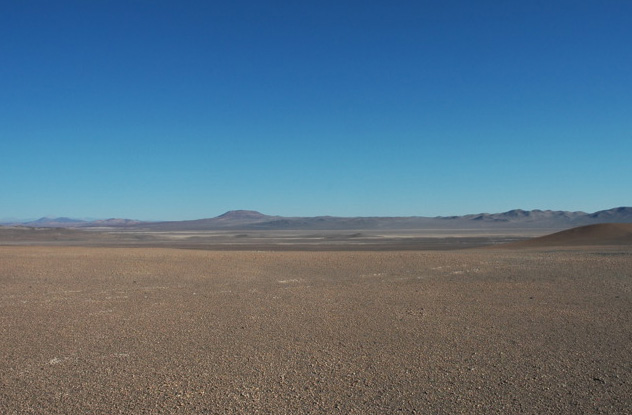
In 2014, a team of archaeologists from Polish, Peruvian, and Colombian universities announced a startling discovery in the northern Atacama Desert in Peru. They found 150 mummies from an unknown culture that dated to a period from the fourth to the seventh century AD, almost 500 years before the Tiwanaku (a civilization that predated the Inca) appeared in the region.
Wrapped in mats, cotton shrouds, or nets, the bodies were buried in the sand without any stone structures to give them away, which may explain why grave robbers never found them. Although archaeologists knew nothing of these people before this recent discovery, the burials do give us some limited information about their culture.
In addition to maces that can crush skulls, the scientists found some bows, quivers, and obsidian heads in the graves, which may indicate that these are elite people who are taking their power with them into another life. The presence of bows was particularly interesting because they’re so rare in Peru. A llama was also found, which means these animals were brought into this area of Peru far earlier than we thought.
The archaeologists discovered pottery, tools, and metal jewelry buried with the bodies. The mummies also had reed withes fastened to their ears. The withes extended to the surface, which may mean they were communication devices used by the living to talk to the dead.
“We learned a lot about what equipment had been used, such as baskets and fishing nets,” said lead researcher Jozef Szykulski to IBTimes UK, “what these people were doing, which was agriculture and fishing, how they dressed, what ornaments they wore and even how they combed their hair.” All of these details indicate an advanced culture lived in that part of Peru at a time when we thought it was uninhabited.
1Hongshan
China

Although vigorously debated by different factions of researchers at the moment, the history of Chinese civilization may be in for a major rewrite. Until recently, the Xia Dynasty was believed to be the wellspring of Chinese civilization in the Yellow River Valley region around 4,100 years ago. But now, historians are debating whether Chinese civilization actually began with the Hongshan culture 6,500 years ago and is thousands of years older than we thought.
We know that the Hongshan lived in an area between Inner Mongolia and what is now Liaoning and Hebei Provinces in northeastern China. Even though they produced some of the earliest jade artifacts, including the first known dragon symbol, the Hongshan culture is usually disregarded because it was considered to be too far from the original source of Chinese civilization.
That may be changing. The Hongshan culture was complex, as suggested by a Goddess Temple in their area and archaeological evidence that they traded with shepherds from Mongolia. Scientists have also found many Hongshan artifacts in the Hunshandake Sandy Lands, which is 300 kilometers (185 mi) farther west than where the Hongshan culture was originally discovered. The most surprising element was that the artifacts suggested that numerous Hongshan fished and hunted in the region. Originally, the desert in Hunshandake was believed to be around one million years old. But new research estimates the desert’s age at a mere 4,000 years old.
That means the climate changed radically while the Hongshan lived there. “We’re amazed by how much water there was back then,” paleoclimatologist Louis Scuderi told LiveScience. “There were very, very large lakes, and grasslands and forests. And based on all the artifacts we’ve found out there, there was clearly a very large population along the lake shores.”
Some scientists believe that when the 20,000-square-kilometer (7,800 mi2) Hunshandake was turned into a desert about 4,200 years ago, the Hongshan were forced to migrate south for survival. As they moved into other areas, they may have played a more important role in creating Chinese civilization than we originally realized.

